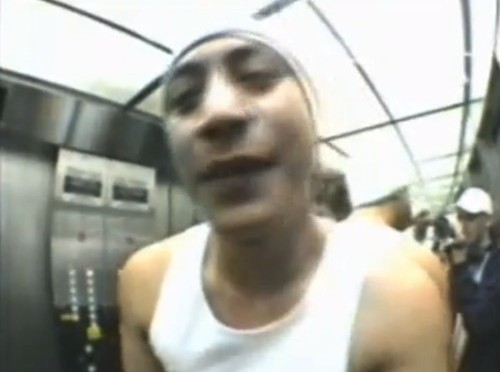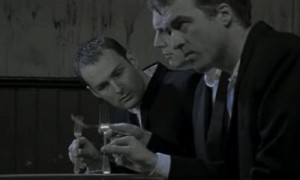 There are plenty of music videos that are set in classrooms, but the learning facility of “Turn Me Around” is delightfully surreal. Damien enters a classrom where all the students are men his age, all neatly dressed in the same suit.
There are plenty of music videos that are set in classrooms, but the learning facility of “Turn Me Around” is delightfully surreal. Damien enters a classrom where all the students are men his age, all neatly dressed in the same suit.
Teaching the class is a young woman, who has drawn some diagrams on the blackboard that look like a cross between American football play diagrams and dance step diagrams, only weirder. She’s a suitably prim-looking teacher, so part of me expects the video to get all Van Halen and have the teacher let down her hair and start dancing in her undies. But no. It’s very well behaved.
Damien joins the class and soon assimilates in this strange school. The teacher rubs a stick all over Damien’s suit (?) and the men do a tapping and listening thing with dinner forks, the same thing you’d normally do with a tuning fork. Damien struggles with this task. He just can’t get that tap-and-listen technique right.
There’s also a bit of biffo, with Damien and one of this classmates engaging in some civilised fisticuffs. Finally he’s ready to graduate. The classmates and teacher disappear and Damien is left sitting alone, repeatedly singing “I’m ready now,” like someone who’s having trouble ordering a taxi with a voice-reconigition phone system.
Filmed in such murky colours that it almost looks black and white, the video has a stylish, slightly surreal feeling, this strange school of cutlery, suits and fists.
Best bit: the artful fanning of spoons.
Director: Jonathan King
Next… a heartbreaking work of staggering genius.
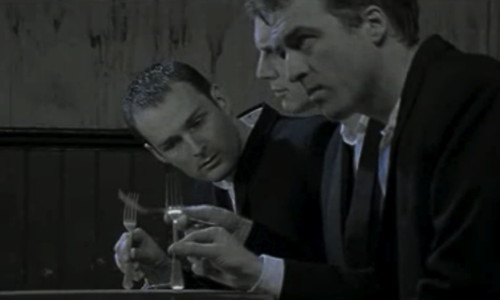

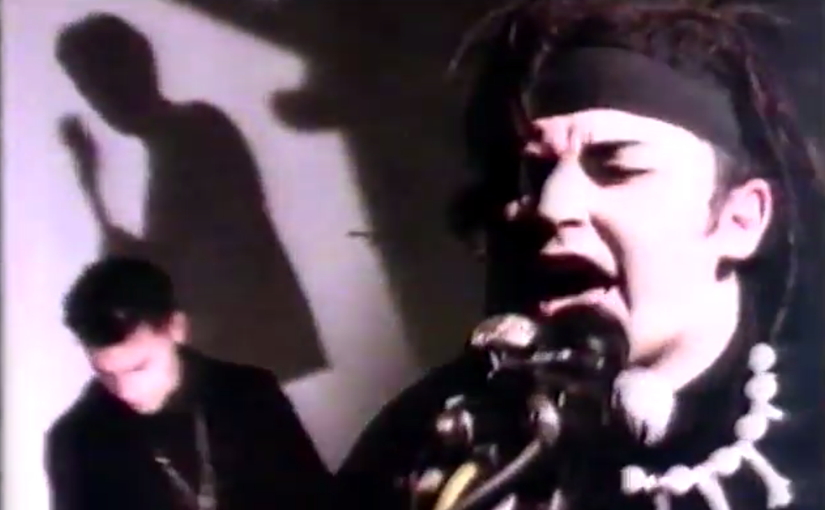
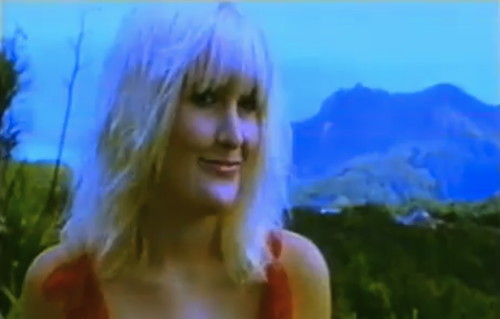
 The YouTube description for this video notes, “I don’t really know anything about them, just found it on an old VHS tape.” That’s what I like to see. Get those old videos online, especially if they seem obscure.
The YouTube description for this video notes, “I don’t really know anything about them, just found it on an old VHS tape.” That’s what I like to see. Get those old videos online, especially if they seem obscure.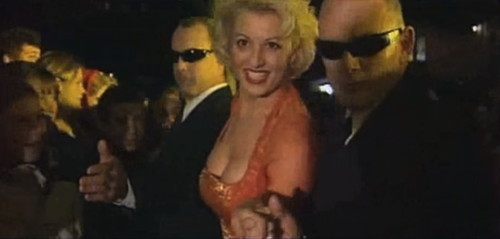
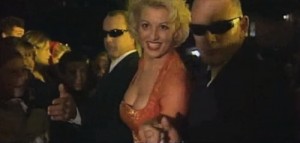 Sometimes the world of NZ On Air-funded music videos throws in some real gems. Presenting the Ross Brothers, a high school band from Oamaru. Their big break was from winning a song competition for a national Coke ad campaign, and soon after came a profile on the Holmes show. This got them the attention of Universal, and soon enough they had some NZ On Air funding to record their single and make a video.
Sometimes the world of NZ On Air-funded music videos throws in some real gems. Presenting the Ross Brothers, a high school band from Oamaru. Their big break was from winning a song competition for a national Coke ad campaign, and soon after came a profile on the Holmes show. This got them the attention of Universal, and soon enough they had some NZ On Air funding to record their single and make a video.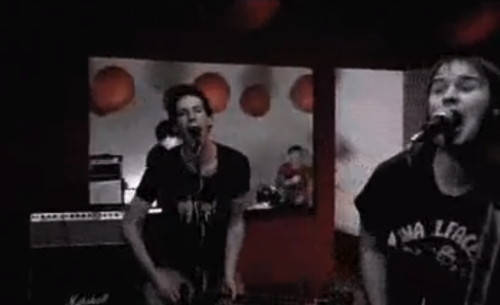
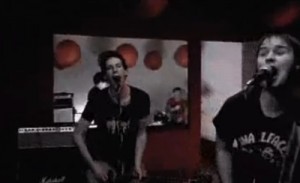 After three missing videos, finally the D4 turn up with “Party” a song about partying. By this stage the group had a little chart success in the UK (something they never experienced in New Zealand) and were well regarded as part of the cool new rock ‘n’ roll scene that was shaking up the early ’00s. The Face magazine featured the band in their “40 messed up new bands” special, noting the group’s upcoming “rev-your-bike-up new single” called “Party”.
After three missing videos, finally the D4 turn up with “Party” a song about partying. By this stage the group had a little chart success in the UK (something they never experienced in New Zealand) and were well regarded as part of the cool new rock ‘n’ roll scene that was shaking up the early ’00s. The Face magazine featured the band in their “40 messed up new bands” special, noting the group’s upcoming “rev-your-bike-up new single” called “Party”.
 “Pate Pate” is an ode to having a good time dancing to the sweet rhythms of the pate log drum. Sung in Tokelauan (a rarity in the world of NZ On Air video funding), it’s an upbeat and highly danceable number. According to Wikipedia, the song was “number one in the South Pacific”, but, uh, citation required.
“Pate Pate” is an ode to having a good time dancing to the sweet rhythms of the pate log drum. Sung in Tokelauan (a rarity in the world of NZ On Air video funding), it’s an upbeat and highly danceable number. According to Wikipedia, the song was “number one in the South Pacific”, but, uh, citation required.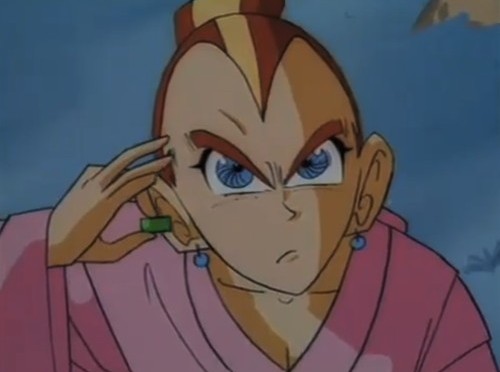
 “Better Days” was the final video of the seven songs released off “The Buddhafinger”. Tadpole’s previous videos have all had their own style and “Better Days” continues that with the Wade Shotter-directed video being done in anime style.
“Better Days” was the final video of the seven songs released off “The Buddhafinger”. Tadpole’s previous videos have all had their own style and “Better Days” continues that with the Wade Shotter-directed video being done in anime style.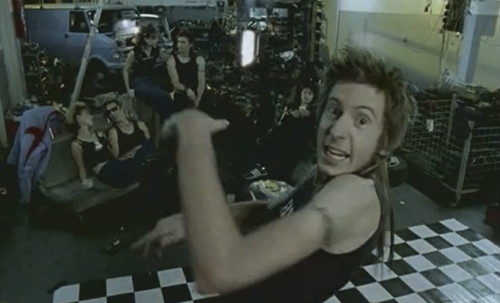
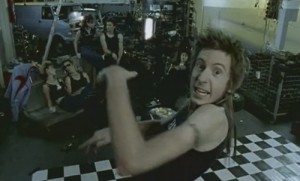 This was “the video that started things off for us in New Zealand,” notes the Vimeo description. And indeed it was, with the sight of a skinny-arse, grease-covered, mulleted lead rapper Tyson kicking off the band’s burst of fame.
This was “the video that started things off for us in New Zealand,” notes the Vimeo description. And indeed it was, with the sight of a skinny-arse, grease-covered, mulleted lead rapper Tyson kicking off the band’s burst of fame.